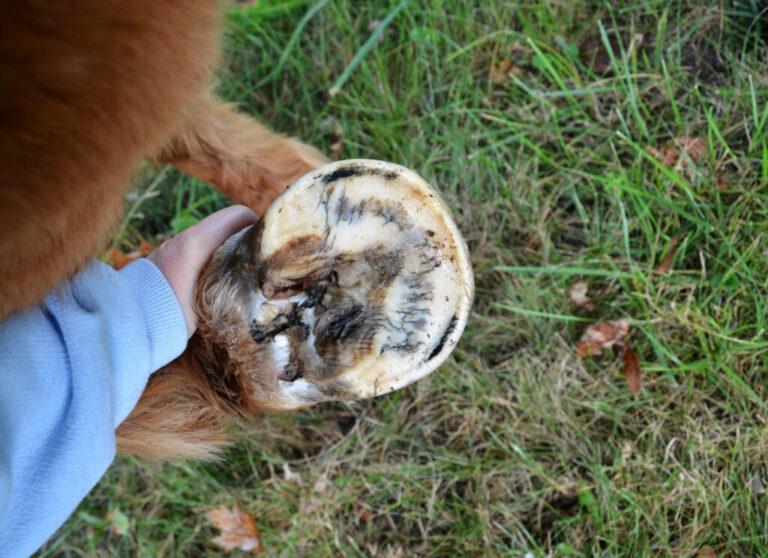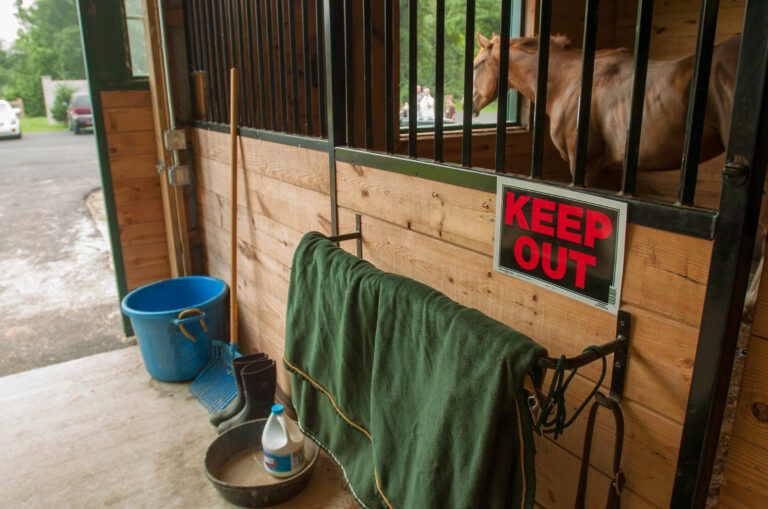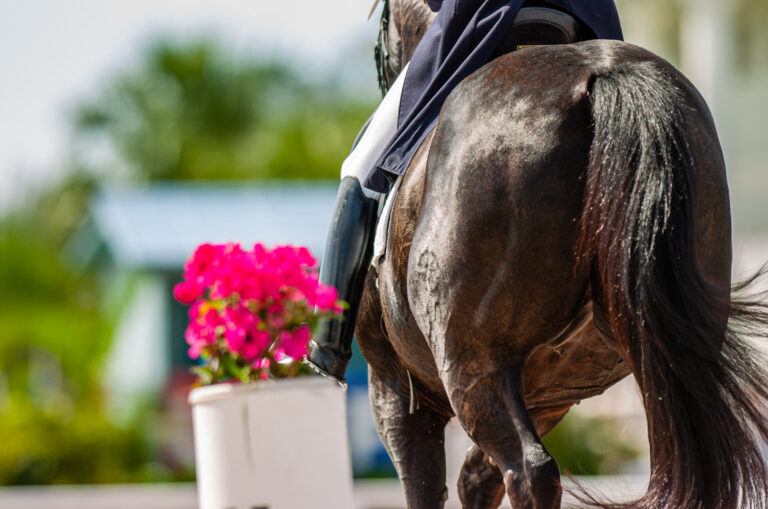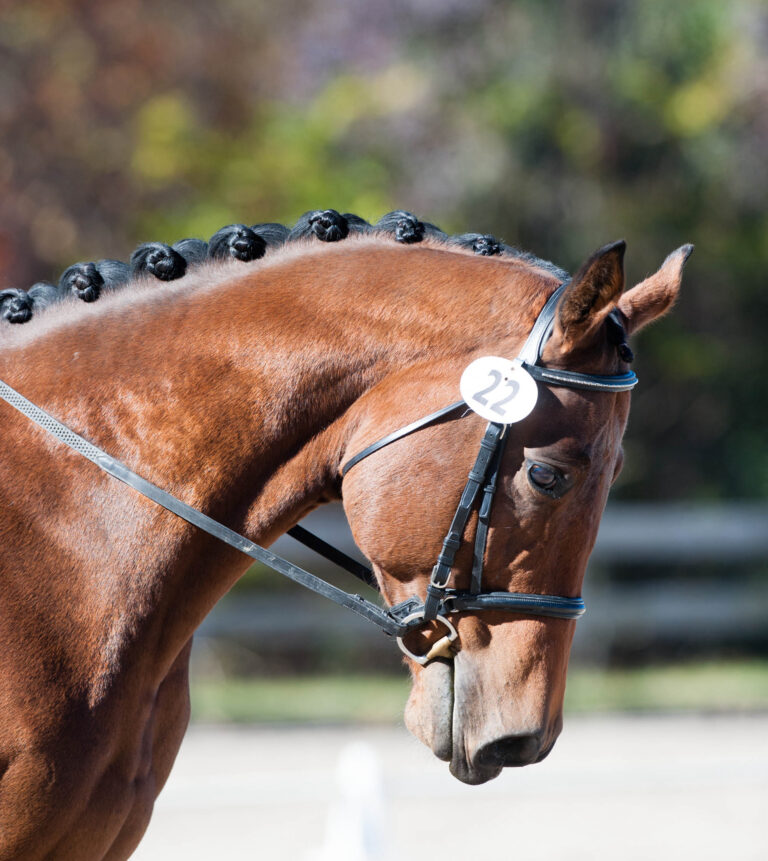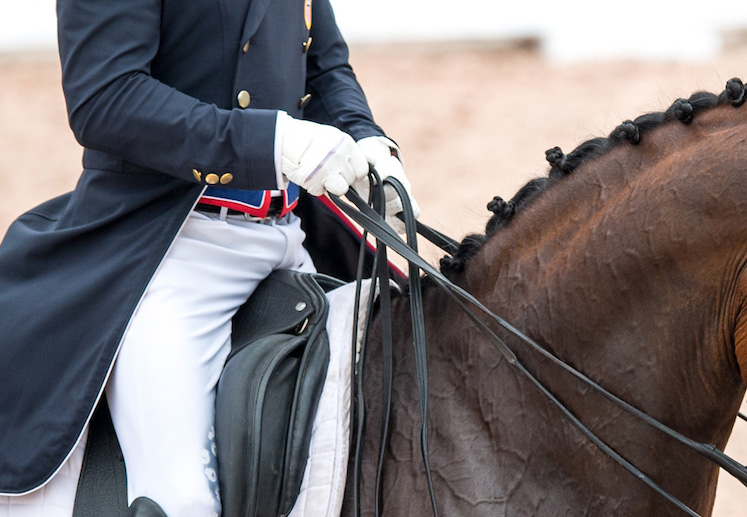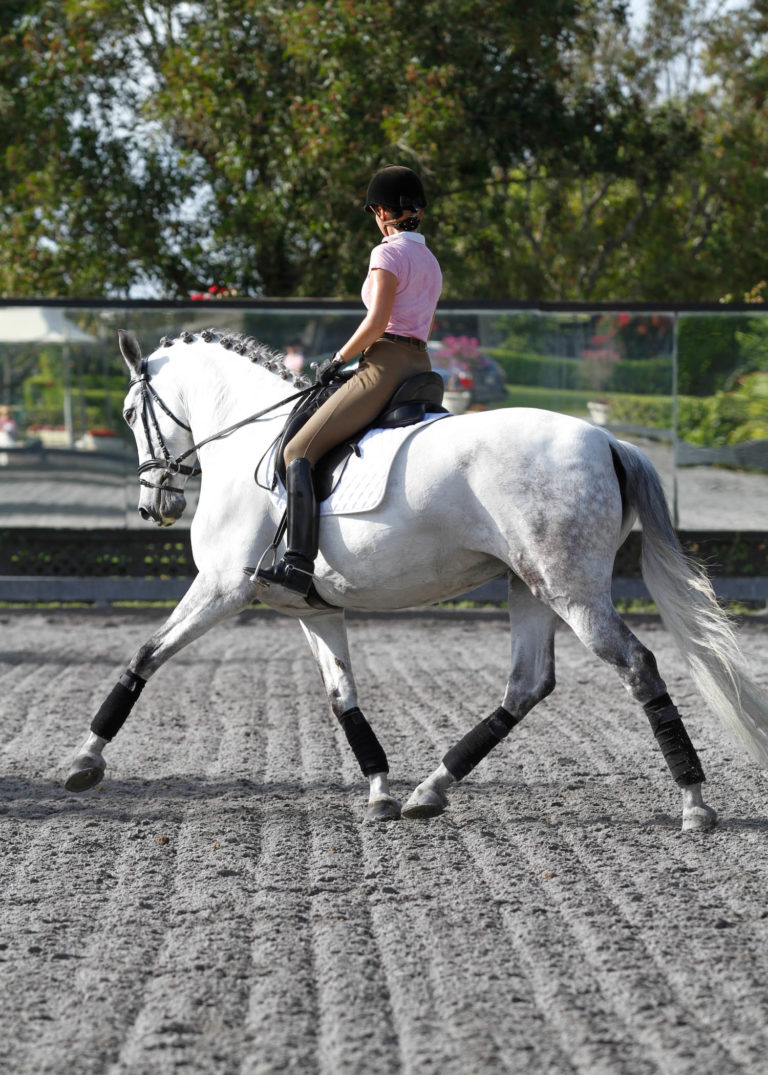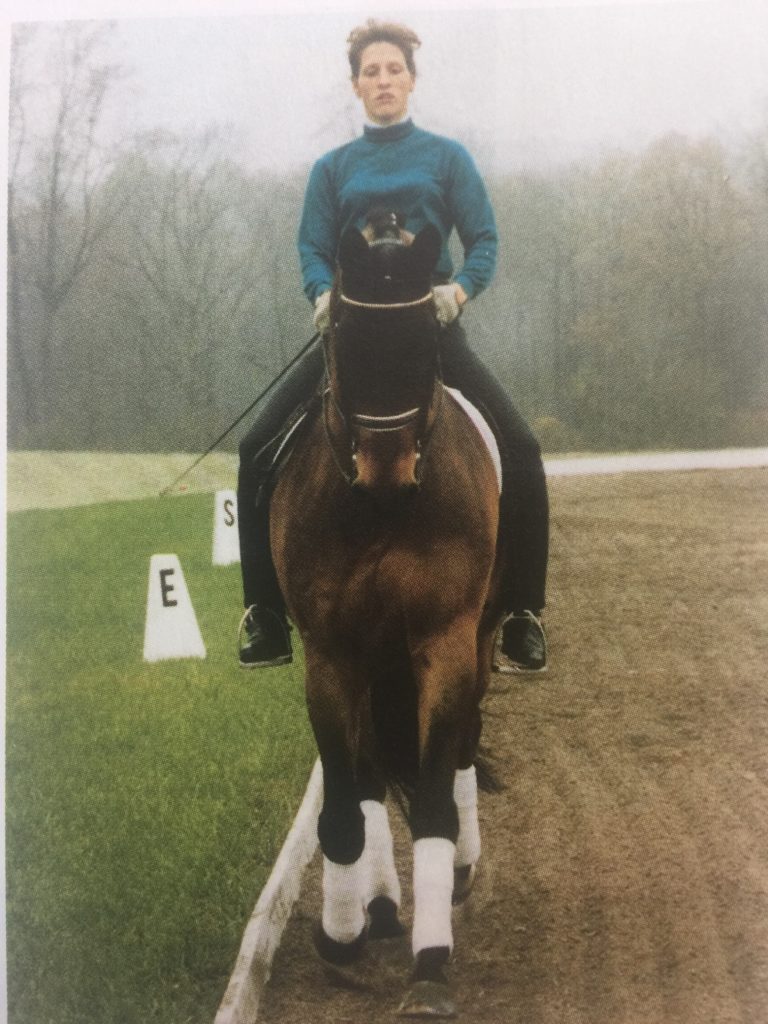Q: I’m looking to purchase a horse who I can ride up through Third Level. I’ve already seen a few horses, and each one has a history of having hock injections, which concerns me. How important are a horse’s hocks for dressage? —Name withheld by request
A: Watching a dressage horse perform with suppleness, balance, symmetry and power is very beautiful. This elegant dance between the rider and horse becomes more and more demanding on the horse as they move up through the levels. The increased challenges come from the movements being more precise, slower and with more impulsion, collection and engagement. As with any athletic endeavor, physiological stress on the body increases as higher performance is pursued.
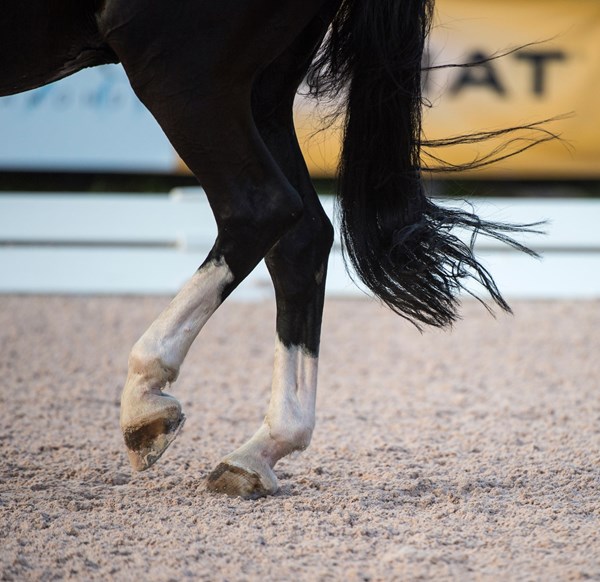
The powerhouse for the increased impulsion and collection needed for dressage is the hindquarters. The joints of the hind legs—stifles, hocks, fetlocks and pasterns—are linked together by a passive stay apparatus of tendons and ligaments. The purpose of the apparatus is to allow the horse to rest while standing. Because of this anatomical linkage, the hind limb joints work together as a unit to produce the movements. The hock joint, or tarsus, is equivalent to the human heel, and has an important role in hind-limb movement.
The tarsocrural joint, or top joint of the hock, bends 12 to 15 degrees. The other four hock joints are plane joints that have a small amount of gliding or shearing movement. The five cartilaginous joints are surrounded by a fibrous joint capsule and numerous tendons and ligaments that work together to move the lower limb. When the hock is flexed, there is outward, or lateral, rotation of the cannon bone during the swing phase of the movement. When the hock is extended, during the stance phase, there is a small medial, or inward, rotation of the cannon bone. At a gallop, the hock movement enables the hind limb to swing outside of the forelimb, and then move back toward the midline as the hock extends right before the hoof is landing on the ground. The force of landing or loading causes compression of the hock joints.
With collected movement, the hind limb is placed further forward and under the horse, which increases hock loading and joint compression. All of the hock joints can be affected by this. The bottom two joints—the distal intertarsal and tarsometatarsal—are most often affected, and can develop osteoarthritis or ‘bone spavin,’ which is frequently associated with pain and disease in the dressage horse.
Lameness or poor performance is often caused by pain in both hocks, which affects the overall movement of the horse’s hind end. Clinical signs of hock pain can be subtle, and include shortening of the hind-limb stride length, difficulty collecting and keeping the rhythm, and an inability to collect to perform piaffe or passage. Additionally, hock pain can cause clinical signs that mimic back pain.
Diagnosis of hock osteoarthritis starts with an in-depth lameness examination that evaluates the horse at different gaits and often on different surfaces. Flexion tests and intra-articular analgesia and/or nerve blocks can help isolate and confirm where the pain is originating from.
Once the origin of pain is isolated to the hock, radiographs are taken. Typically both hocks are x-rayed to provide a comparison and comprehensive evaluation of the joints. Multiple radiographic views are needed to evaluate the curvilinear bone structure of the hock. Due to bone compression, horses who have confirmed pain may or may not show radiographic changes, and advanced imaging of nuclear scintigraphy (bone scan) can be helpful in detecting the region of discomfort.
After an anatomic diagnosis is made, the affected joints can be medically treated with anti-inflammatory or biologic medications. Horses with acute lameness or few radiographic changes may respond well to joint injections of anti-inflammatory medications such as corticosteroids and hyaluronic acid. Horses with long-term chronic lameness may benefit from biological products such as IRAP (interleukin receptor antagonist protein) and PSGAS (Polysulfated Glycosaminoglycan). In some cases, the disease process can advance to wearing away all of the cartilage so there is bone-on-bone contact with joint movement. This type of advanced osteoarthritis of one or both of the bottom two joints may cause them to “fuse” together. The fusing process is painful, and most horses with this pathology work at a much lower level, if they can be kept comfortable, or are retired. Medical treatment is combined with a two- to four-week rehabilitation exercise program and if needed, shoeing changes. Depending on the response to treatment and level of work, a horse may require joint injections on a regular three- or six-month schedule to work comfortably.
The prognosis for osteoarthritis of the hock in the dressage horse depends on several factors: Conformation of the horse, which joints are involved, the severity of the arthritis, the training program and level of work for the horse. Generally, the stress on the hocks can be reduced by keeping the horse in good athletic condition and riding on footing designed to minimize concussive force. The earlier a subtle or suspected problem is evaluated and proper treatment started, the more successful the outcome can be.
Understanding how the horse’s joints operate and working with your equine veterinarian to keep them functioning optimally can lead to years of enjoyable schooling and successful competitions.
Janine Wilson, DVM, CAC is a practitioner resident of the American College of Veterinary Sports Medicine and Rehabilitation, and an FEI official veterinarian for dressage. She is also the owner of Oregon Equine in Sherwood, Oregon.


